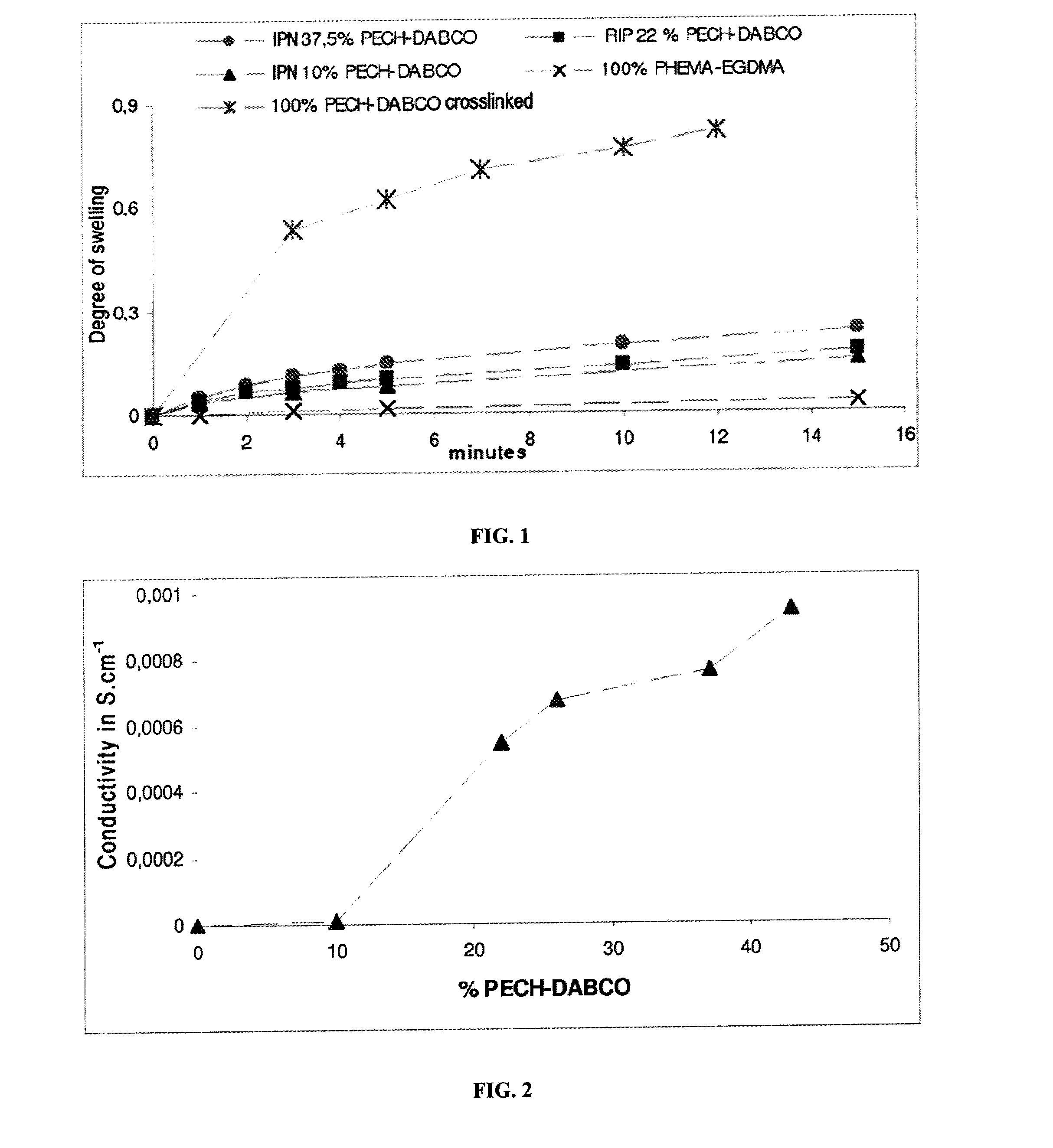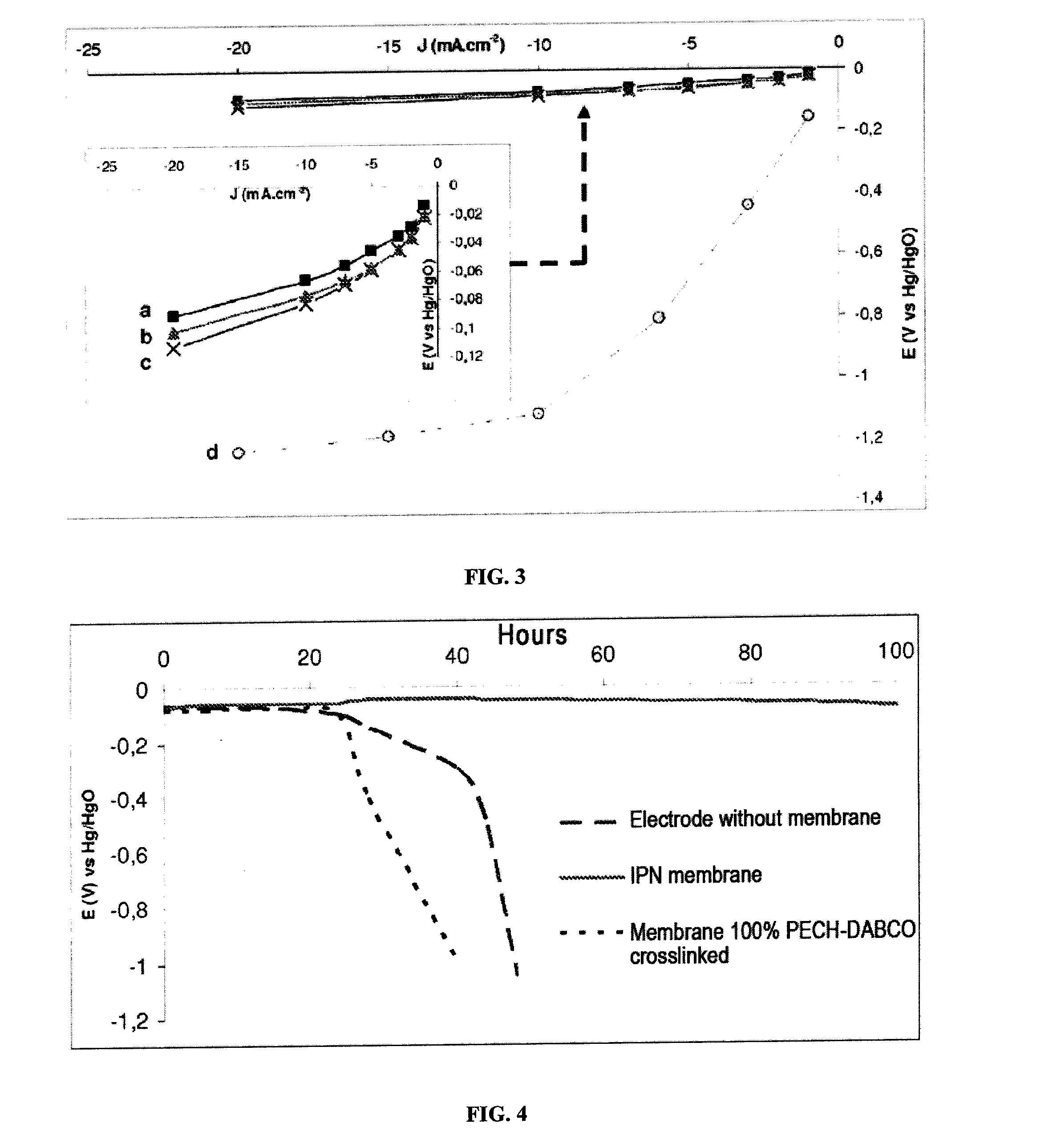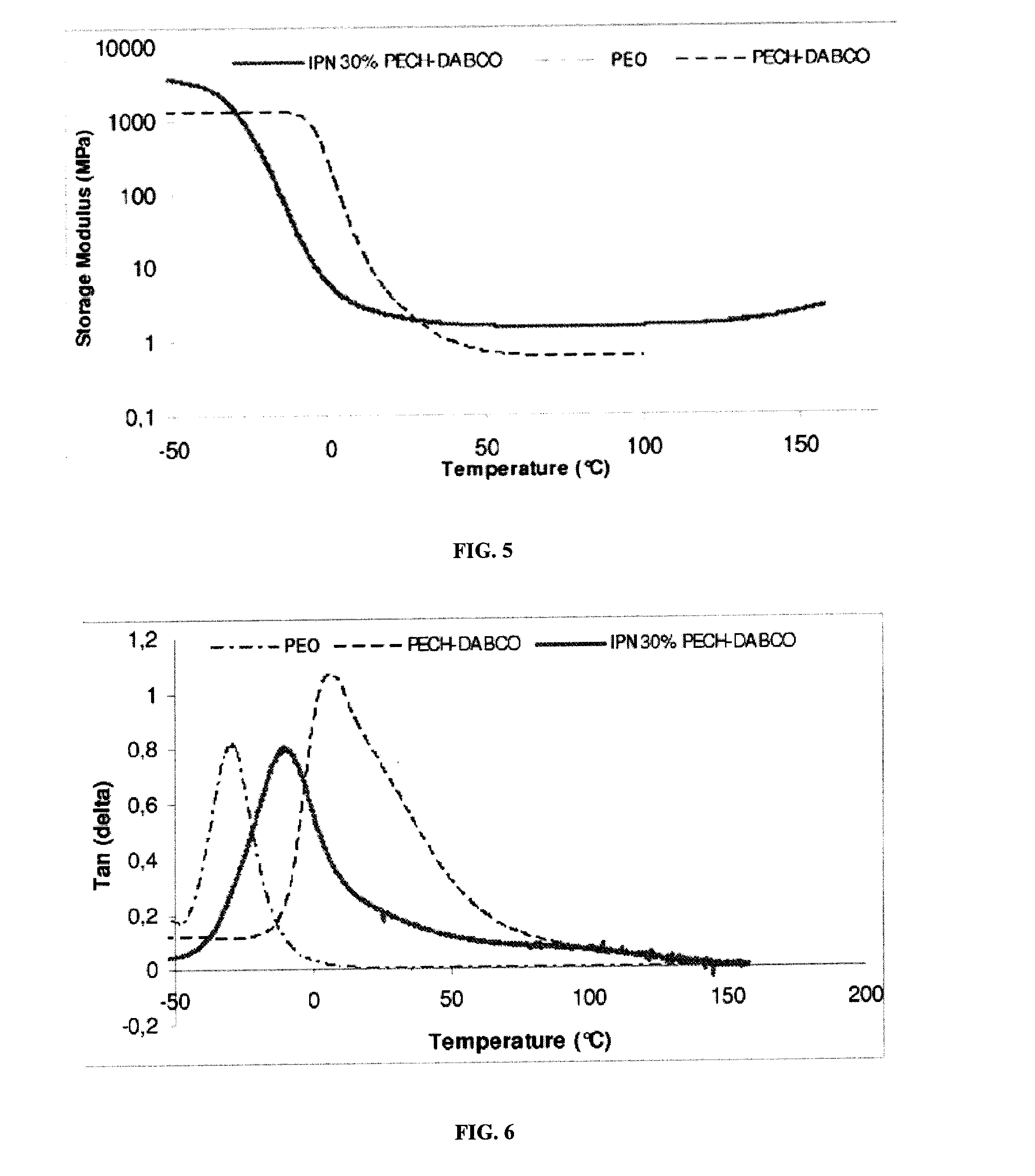Interpenetrating Network of Anion-Exchange Polymers, Production Method Thereof and Use of Same
a technology of anion exchange polymer and interpenetrating network, which is applied in the direction of cell components, final product manufacturing, sustainable manufacturing/processing, etc., can solve the problems of air electrode structure, difficult interface, and gradual degradation
- Summary
- Abstract
- Description
- Claims
- Application Information
AI Technical Summary
Benefits of technology
Problems solved by technology
Method used
Image
Examples
example 1
Preparation of an IPN Material Based on Crosslinked Polyepichlorohydrin and on Crosslinked Poly(Hydroxyethyl Methacrylate)
[0077]An ethanolic solution containing 200 g / L of an epichlorohydrin polymer (PECH) grafted beforehand with 12% by weight of 1,4-diazabicyclo[2,2,2]octane (DABCO) is prepared. 0.9 g of hydroxyethyl methacrylate (HEMA), 0.1 g of ethylene glycol dimethacrylate (crosslinking agent) and 0.05 g of azobisisobutyronitrile (AIBN, free-radical initiator) are dissolved in 4 ml of this solution. The solution is degassed under a stream of argon and with stirring for 30 minutes at ambient temperature. The solution is then placed in a mold made up of two glass plates (5 cm×5 cm) separated by a Teflon® seal 1 mm thick. The filled mold is placed in an oven at 60° C. for 16 hours. The IPN membrane obtained after demolding is homogeneous and transparent and has a consistency which allows it to be handled easily.
[0078]In the membrane, the weight ratio of the first polymer network (...
example 2
[0079]IPN membranes are prepared, in the manner described in example 1, by varying the initial proportions of the reactants so as to obtain PECH contents of 10%, 22%, 30% and 37.5% by weight, as are two control membranes containing, respectively, 0% of crosslinked PECH (i.e., containing 100% of poly(hydroxyethyl methacrylate) crosslinked with diethylene glycol dimethacrylate, PHEMA-EGDMA) and 100% of PECH crosslinked with DABCO.
example 3
Determination of the Degree of Swelling in Water of the Membranes as a Function of Immersion Time-Anionic Conductivity
[0080]The membranes prepared in example 2, containing respectively 0%, 10%, 22%, 37.5% and 100% of crosslinked PECH, are immersed in distilled water at 23° C.
[0081]At regular intervals, the membrane is removed from the water in order to determine its weight.
[0082]The degree of swelling is calculated according to the formula
Ds=(Wt−W0) / W0
[0083]The various curves of degree of swelling in water as a function of time are represented in FIG. 1.
[0084]It is observed that the degree of swelling in water of the 100% crosslinked PECH control membrane is approximately 75% after about ten minutes, whereas that of all the other membranes is less than 30%. The swelling in water of the 100% crosslinked PECH membrane results in mechanical weakening of the membrane. The membrane cannot be handled and is unusable.
[0085]The IPN membranes containing 10%, 22% and 37.5% of PECH and the PH...
PUM
| Property | Measurement | Unit |
|---|---|---|
| temperature | aaaaa | aaaaa |
| temperature | aaaaa | aaaaa |
| temperature | aaaaa | aaaaa |
Abstract
Description
Claims
Application Information
 Login to View More
Login to View More - R&D
- Intellectual Property
- Life Sciences
- Materials
- Tech Scout
- Unparalleled Data Quality
- Higher Quality Content
- 60% Fewer Hallucinations
Browse by: Latest US Patents, China's latest patents, Technical Efficacy Thesaurus, Application Domain, Technology Topic, Popular Technical Reports.
© 2025 PatSnap. All rights reserved.Legal|Privacy policy|Modern Slavery Act Transparency Statement|Sitemap|About US| Contact US: help@patsnap.com



